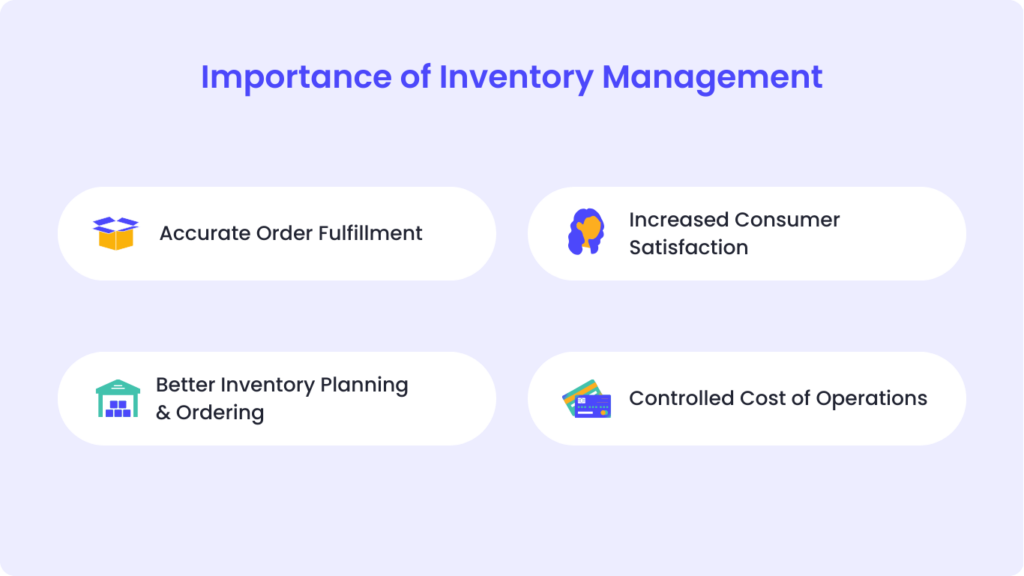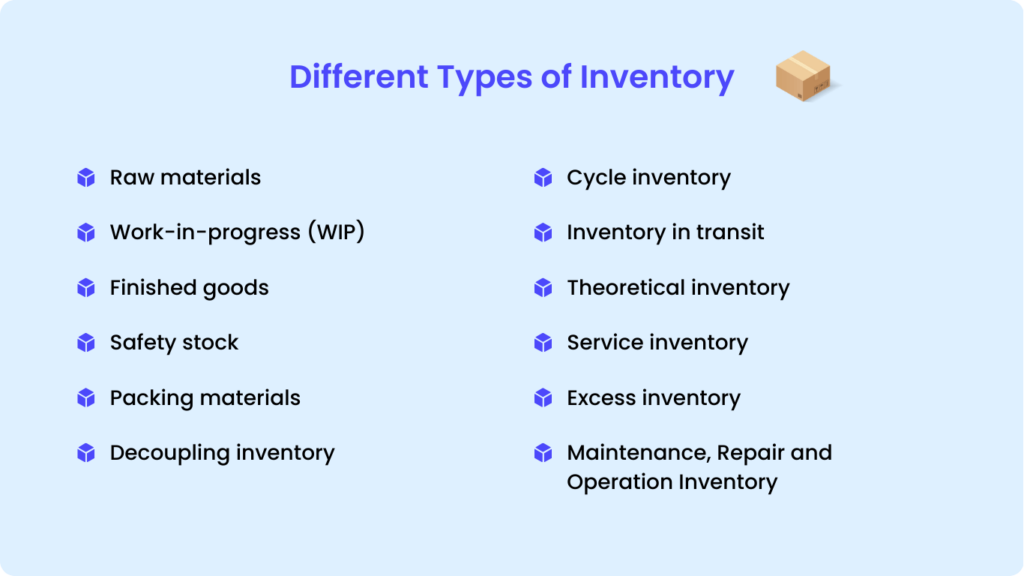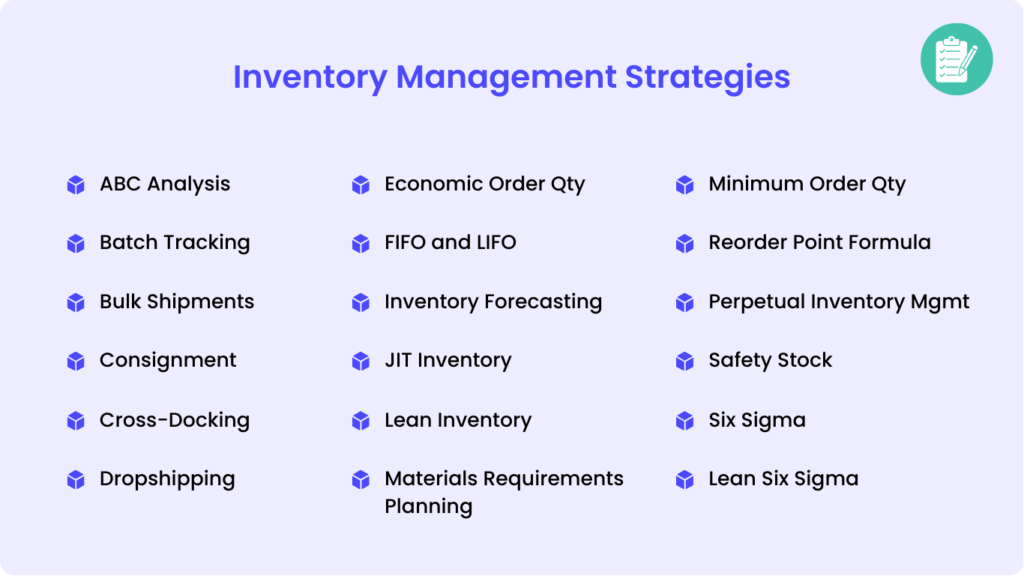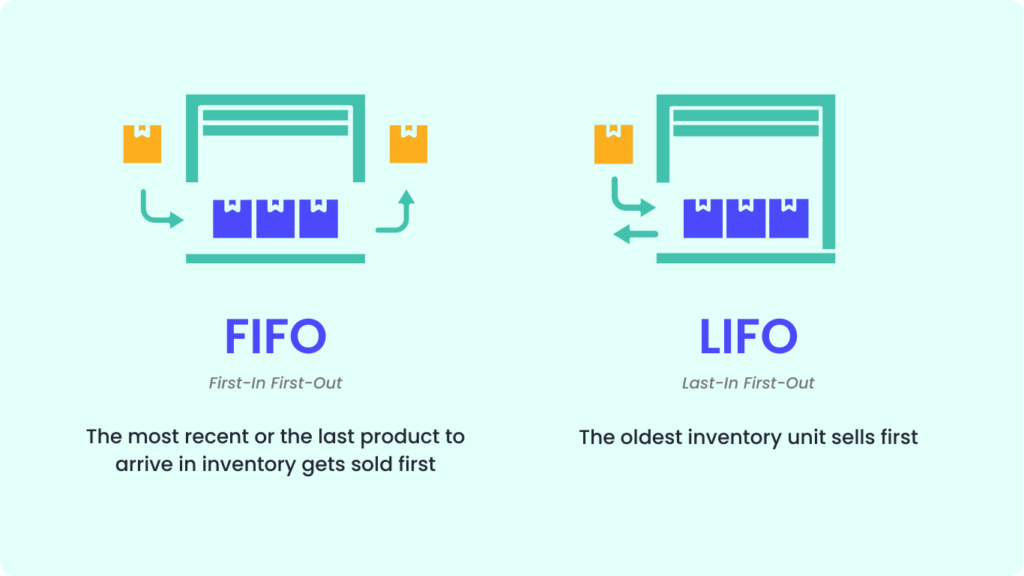What is Inventory Management?
Inventory management is a critical process for companies to effectively determine both the type and quantity of stock needed to meet customer demand. Inventory management involves tracking inventory from manufacturers to warehouses to the point of sale. The main goal is to ensure there is enough stock to fulfill orders.
Effective inventory management relies on having clear visibility of inventory, which involves knowing precisely when to place orders, determining the appropriate quantities, and deciding on where to store inventory. This process is crucial to providing early warnings about potential stock shortages.
To understand if you’re managing inventory successfully requires measuring the rate of inventory turnover. This financial metric reflects the frequency at which stock is sold and replaced over a specific period. The goal for businesses is to achieve a balance between stock and sales, avoiding excess inventory that can lead to ‘deadstock’ or unsold items, which can result in financial losses.
Why Is Inventory Management Important?
Inventory often represents a significant asset for a company and stands at the heart of the supply chain. Managing it correctly is vital to customer satisfaction, as insufficient inventory can result in customer dissatisfaction and potential loss of business.
Simultaneously, too much inventory can become a financial burden, as it requires additional spending on storage, insurance, and risk management against issues like theft or damage. This surplus stock ties up cash flow that could otherwise be used more productively in other areas of business.
Mastering inventory management is essential for businesses to balance between having enough stock to fulfill orders, and avoiding the financial burdens of overstocking. Proper inventory management is about optimizing the entire operational process to achieve better cash flow and customer satisfaction.

Benefits of Inventory Management
Good inventory management ensures that businesses can fulfill current and future orders, which results in increased profitability. Additionally, it offers several key advantages:
Simultaneously, too much inventory can become a financial burden, as it requires additional spending on storage, insurance, and risk management against issues like theft or damage. This surplus stock ties up cash flow that could otherwise be used more productively in other areas of business.
Mastering inventory management is essential for businesses to balance between having enough stock to fulfill orders, and avoiding the financial burdens of overstocking. Proper inventory management is about optimizing the entire operational process to achieve better cash flow and customer satisfaction.
Cost Savings
By gaining insights into stock trends, businesses can understand exactly what inventory they have and where it’s located. This knowledge enables more efficient use of existing stock and reduces the need for excessive inventory at individual locations, such as stores or warehouses.
More Cash Flow
Sound inventory management means investing in stock that has a high turnover rate, therefore keeping the cash flow active within the business. This ensures that money is not tied up in unsold inventory.
Higher Customer Satisfaction
Building a loyal customer base is the ability to consistently provide customers with the products they desire without unnecessary wait times. Effective inventory management plays a crucial role in achieving this, thereby enhancing overall customer satisfaction.

Challenges of Inventory Management
The main challenges to inventory management is having too much inventory and not being able to sell it, not having enough inventory to meet orders, and not knowing what you have in inventory. Additional challenges include:
Accurate Stock Information
Without real time analytics about stock levels, determining the right time to replenish and identifying fast-moving items becomes challenging.
Inefficient Processes
Relying on outdated or manual inventory management processes can lead to errors and operational delays.
Understanding Customer Demand
Customer preferences are always changing. An inability to track these stock trends can leave a business unprepared for changes in demand.
Optimal Use of Warehouse Space
Inefficiently organized warehouse space leads to time wastage as staff struggle to locate similar products. Effective inventory management is vital in addressing this issue and optimizing warehouse organization.

What is Inventory?
The raw materials, parts, and completed goods that a business sells or uses in its manufacturing processes are all included in inventory. As far as accounting is concerned, inventory is an asset. To guarantee proper inventory value on the balance sheet, accountants rely on comprehensive inventory data.
Inventory vs Stock
Although the phrases “stock” and “inventory” are frequently used synonymously in e-commerce, there are some minor differences between the two. In general, “inventory” consists of components that go into making a finished product as well as finished goods. Stock is the amount of finished goods that are kept in stock and can be purchased. Stated differently, not all inventory is stock, but all stock is inventory.
When discussing products like apparel, cannabis, and home goods, managers commonly use expressions like “stock on hand,” equating the terms “inventory” and “stock” in the retail industry. However, the term “inventory” is used more widely across a variety of industries to refer to components and raw materials utilized in production processes in addition to commodities for sale.
What are the different types of inventory?

Raw materials, work-in-progress (WIP), finished goods, safety stock, packing materials, decoupling inventory, cycle inventory, inventory in transit, theoretical inventory, service inventory, excess inventory, and maintenance, repair, and operations (MRO) inventory are the twelve different categories into which inventory can be divided. However, it’s important to remember that MRO is not always recognized as a separate category of inventory.
Inventory Management Process
When a business accepts a client order and produces on demand, the inventory management process begins and ends until the order is shipped. Otherwise, you issue purchase orders for the necessary raw materials or components after forecasting your demand. Analyzing sales patterns and planning how things are stored in warehouses are other steps in the process.
To create a successful inventory management plan, a thorough understanding of each phase in the process is required. This process is critical to decreasing errors and picking the best inventory management software for your company.

Delivery of Goods to Your Facility: At this point, finished goods for retailers or raw materials and subcomponents for manufacturers arrive at your warehouse.
Inspection, Sorting, and Storage: This stage involves inspecting, sorting, and storing inventory in allocated spaces.
Monitoring Inventory Levels: Inventory levels can be monitored via cycle counts, perpetual inventory software, or physical counts. All of these methods help reduce errors.
Customers Purchasing Stock: Consumers can place orders in a real store or via your website.
Approval of Stock Orders: At this point, orders are forwarded to suppliers, or the process may be automated through a Point-of-Sale (POS) system.
Packing Stock Into Orders: SKU numbers are used to locate required items, which are then taken out of stock and shipped to the customer or manufacturer.
Updating Inventory Levels: By using a perpetual inventory system, inventory levels can be automatically updated and shared with the appropriate parties.
Reordering Due to Low Stock Levels: Depending on inventory levels, restocking occurs when necessary.
Streamline your inventory management with Breadstack – the ultimate solution to automate and simplify your inventory processes. From real-time tracking of goods to seamless order fulfillment, Breadstack ensures precision and efficiency at every step.
How Inventory Management Works
Keeping precise records of stock numbers and their precise placements in warehouses is the major goal of inventory control. Local and eCommerce stores use inventory management software tools to effectively track stock from the manufacturer all the way to the client. These systems control all activities in a warehouse, such as receiving stock and selecting, packing, and shipping items.
Different Inventory Management Strategies
In order to improve stock accuracy and satisfy the specific requirements of a business, inventory can be managed with a variety of methods and procedures. Here is a quick summary:

ABC Analysis
This approach categorizes stock based on popularity, identifying items that are in high and low demand.
Batch Tracking
Batch Tracking allows you to group and track a set of stocks that have similar qualities. It’s able to keep track of product expiration dates, and trace defective items back to their original batch.
Bulk Shipments
Involves purchasing, storing, and shipping large quantities of items that are typically put directly onto a vessel or container.
Consignment
Consignment is a supply chain operations arrangement in which a retailer sells a product while the supplier retains ownership until it is sold.
Cross-Docking
Cross-docking is a method of efficiently distributing products without having to hold them in warehouses for extended periods of time.
Dropshipping
Dropshipping is a type of order fulfillment in which a company does not hold the inventory it sells. When an order is received, the seller forwards it to another company, who ships it directly to the consumer.
Economic Order Quantity (EOQ)
Economic order quantity refers to the optimal amount of inventory that a company should purchase to meet demand while reducing holding and storage costs. This approach helps guide making efficient decisions.
FIFO and LIFO
The Last-In, First-Out (LIFO) approach states that the most recent or the last product to arrive in inventory gets sold first. The First-In, First-Out (FIFO) technique states that the oldest inventory unit sells first.

Just-In-Time Inventory (JIT)
Cross-docking is a method of efficiently distributing products without having to hold them in warehouses for extended periods of time.
Lean Inventory
Lean inventory is the process of increasing the value of a company’s inventory by reducing waste when handling goods, controlling labor and time, and continuously improving production processes.
Materials Requirements Planning (MRP)
Material requirements planning (MRP) is a system that calculates the materials and components required to produce a product. It involves three main steps: inventorying the resources and components on hand, determining which extra ones are required, and scheduling their manufacture or purchase.
Minimum Order Quantity (MOQ)
Minimum Order Quantity is referred to as MOQ. A minimum order quantity is the smallest amount of units that must be ordered in a single purchase. MOQ is based on either cost or quantity. Manufacturers and suppliers frequently use this technical word to describe a production run.
Reorder Point Formula
Businesses use the reorder point formula to determine the minimum quantity of inventory required to place additional orders and prevent stockouts.
Perpetual Inventory Management
Perpetual inventory is a system that provides real time tracking of inventory changes and updates the records as goods are purchased. It accurately reflects the level of stock on hand.
Book a demo to see Breadstack’s inventory management system. Real time tracking, automated processes, advanced reports.
Safety Stock
Safety stock is an extra quantity of an item kept in inventory to reduce the possibility of the item going out of supply. It serves as buffer stock in case sales exceed projections and/or the supplier is unable to deliver the extra units on schedule.
Six Sigma
Six Sigma refers to inventory management tools and procedures that improve manufacturing processes. The strategy identifies and removes any flaws in business and manufacturing processes.
Lean Six Sigma
Lean Six Sigma is an approach that uses data-driven tools and inventory management techniques to remove waste, variation, and faults in operations, allowing you to optimize inventory levels and reduce stockouts.
Demand Planning and Inventory Management
Demand planning is the practice of forecasting demand for a product or service so it can be created and delivered more efficiently. Demand planning is one of the most important steps in supply chain inventory management.

Inventory management formulas
Keeping ideal stock levels requires a thorough understanding of inventory management formulas. Experts in accounting and inventory management created and improved these formulas, which streamline the inventory calculation process and guarantee more precise and effective stock management.
Retail Inventory Management
Retail inventory management is the process of ensuring that you have enough merchandise on hand to meet customer demand. With a system like Breadstack, it streamlines the process of aligning stock levels with customer demand, while maximizing profits and customer satisfaction.
Multi-Location Inventory Management
Multi-location inventory management strategically organizes and routes products to reduce shipping delays and improve customer experience. With this strategy, companies can efficiently monitor and manage inventory across all locations, guaranteeing the best possible stock distribution to satisfy order fulfillment demands.
With Breadstack, you gain the ability to seamlessly monitor and optimize inventory levels across all locations, ensuring that each outlet is properly stocked to meet customer demands efficiently. Breadstack empowers businesses to achieve precision in multi-location inventory management, turning a challenging process into a streamlined and effective operation.
What Is Inventory Management System?
Using a variety of software programs, an inventory management system is a powerful tool for efficiently tracking and controlling stock movements. This solution is made to simplify inventory management across several platforms and is capable of interacting with multichannel shipping and sales systems.
The technology is critical for optimizing stock levels and assuring product availability. It provides a uniform, real-time view of products, inventory, and orders that spans all business locations and sales channels. Businesses can free up capital for use in other crucial business areas by developing a system that allows them to maintain reduced inventory levels. It’s essentially a system for managing inventories that helps keep costs down while maintaining a high level of customer satisfaction.
Types of Inventory Management Systems
Depending on their operational requirements, businesses usually select from a variety of inventory management systems. The most common types, which differ in accuracy and sophistication, are perpetual, periodic, and manual inventory systems.
Manual Inventory System
If your team uses a manual inventory system, they will have to manually update inventory locations and stock levels. This means that your staff will manually update the company’s inventory list when inventory comes in and out.
Periodic Inventory System
Periodic inventory is an accounting procedure that involves valuing stocks at specific times. In order to balance their general ledger, businesses physically count their products at the conclusion of the period. Following that, businesses apply the remaining funds to the start of the subsequent period.
Perpetual Inventory System
A perpetual inventory system uses software that continuously assesses your inventory using electronic data rather than a physical inventory. This approach starts with a physical count as a baseline and then updates based on sales and shipments.
By using a perpetual inventory system, businesses can get real time updates on their inventory levels to manage more effectively. Breadstack uses a perpetual inventory system to manage products and sales.
Choosing An Inventory Management System
Selecting the ideal inventory management software requires pinpointing the specific features that align with your business requirements. Breadstack makes it easy to track stock movements and locations within a warehouse, planning inventory, tracking trends, and much more.
Breadstack offers essential features that include real-time demand planning, data analysis tools, and real-time analytics. Businesses can ensure they are equipped with a top-tier system tailored to their unique inventory management needs.

